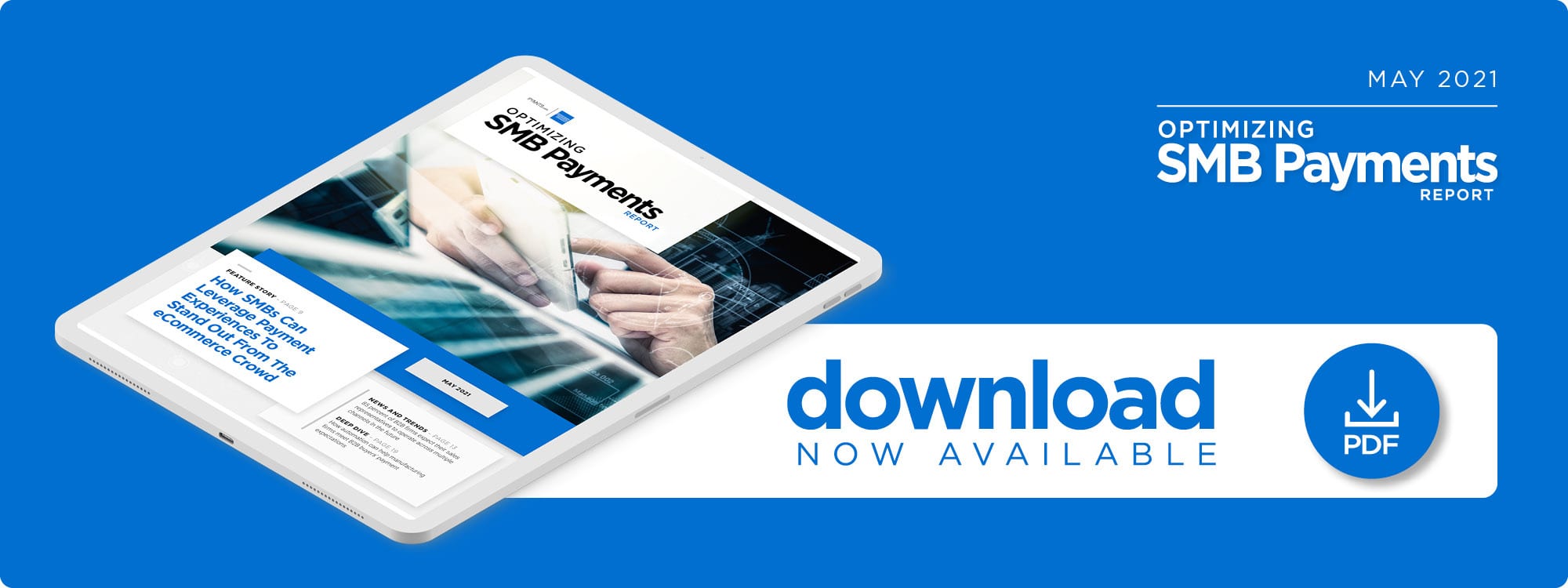How SMBs Can Leverage Payment Experiences To Stand Out From The eCommerce Crowd

Curbing cart abandonment is a matter of survival for SMBs selling online. In the Optimizing SMB Payments Report, BigCommerce’s Chad Jaben explains the importance of offering SMBs a choice of 600-plus payment providers to boost the trust and sense of security that keeps their customers happy.
The past year changed the payment landscape by forcing businesses of all sizes to accelerate their digital transformations.
Replacing or updating legacy systems was no longer a luxury but a necessity, as businesses — particularly small- to medium-sized businesses (SMBs) — needed to adapt quickly to retain and grow their customer bases.
Not all eCommerce payments are alike, however, and choosing the right payment providers can propel business growth by earning consumers’ trust and convincing them to buy from firms’ sites. This means that business owners looking to stay competitive must keep a close eye on payments — especially the trendsetting payment habits of millennial and Generation Z consumers — to pivot their platforms accordingly.
Businesses seeking the right payments mix can tap Software-as-a-Service (SaaS) eCommerce platforms such as U.S.-based BigCommerce to help build online stores. The technology company assists startups and other companies with tools to grow their online sales and offers an array of options so that businesses of all sizes and types have the ability to work with a solution that best fits their needs.
“Our CEO always says, ‘You can’t conduct eCommerce unless you can accept the payment,’” BigCommerce Director of Strategic Business Development Chad Jaben told PYMNTS. “Anyone can have a website with attractive products, but the differentiator is: Can you accept the payment, [and] can you ship the product to them? The payment is the bottom line.”
Jaben explained how payments play a strong role in giving businesses a smooth, simple and secure way to process their funds and also helping to boost sales while reducing cart abandonment.
Choosing The Right Payment Provider
All businesses face the same issue when it comes to breaking through the crowded online atmosphere: figuring out how to survive given fierce competition. SMBs have to work even harder to stand out from the noise, and lesser-known or unfamiliar SMBs can benefit from leveraging payment experiences to prevent consumers from abandoning checkout.
“I ask them, ‘What’s your business model? What are the main things you focus on and you need to enable?’” Jaben said. “‘Based on that business model, what are the kinds of customers you are trying to attract, and how do you think they want to pay based on where they live [and] what their demographics are? … What are the prevalent payment methods for the kinds of consumers you want to attract? Last, how does that fit into your operations?’”
Payment systems have to support the back-end functionalities of the particular operation, whether a subscription provider, international eTailer or SMB. BigCommerce offers support for numerous payments providers to help satisfy all merchant business models and give merchants the freedom of choice to select a provider that works best for their specific needs. The company then negotiates special rates for their merchants so that merchants do not have to negotiate with the provider independently.
“We talk to the providers and recommend they put themselves in the shoes of those small businesses, pointing out that they want to make transactions quick, seamless and reliable … for consumers to trust their sites and transact with them,” Jaben said.
Businesses also want payment features that convince consumers that the businesses will keep their payment information secure when they are buying with them for the first time. They also want flexibility in their payment options and expect to see their preferred methods.
The New Payment Experience
The best payment experiences have to integrate the four business “pillars” to succeed, including designing an attractive product catalog with clear descriptions, keeping track of finances for tax purposes and setting up shipping strategies. A seamless and frictionless payment system is the final pillar and arguably the most important, according to Jaben, as it addresses the bottom line.
“[Fueling sales] really all boils down to convenience and trust,” he said. “Ultimately, merchants have to offer consumers a convenient way to pay how they want to pay with a seamless, fast checkout.”
The convenience factor may be one part of the purchasing process, but consumers want to know that their data is protected and the process is secure. Jaben also suggested that SMBs could benefit from more analytics tools.
“Anything that makes payment processes more seamless and faster, that reduces cart abandonment and makes people feel protected when paying … that’s where a lot of the innovation will be,” he said.
There is a lot of room for growth and opportunity in eCommerce, and businesses will have to stay on top of payment trends to flourish. SMBs that tune in to consumers’ payment preferences and offer diverse, secure options will have a better chance of cutting through the noise and catching their attention.

